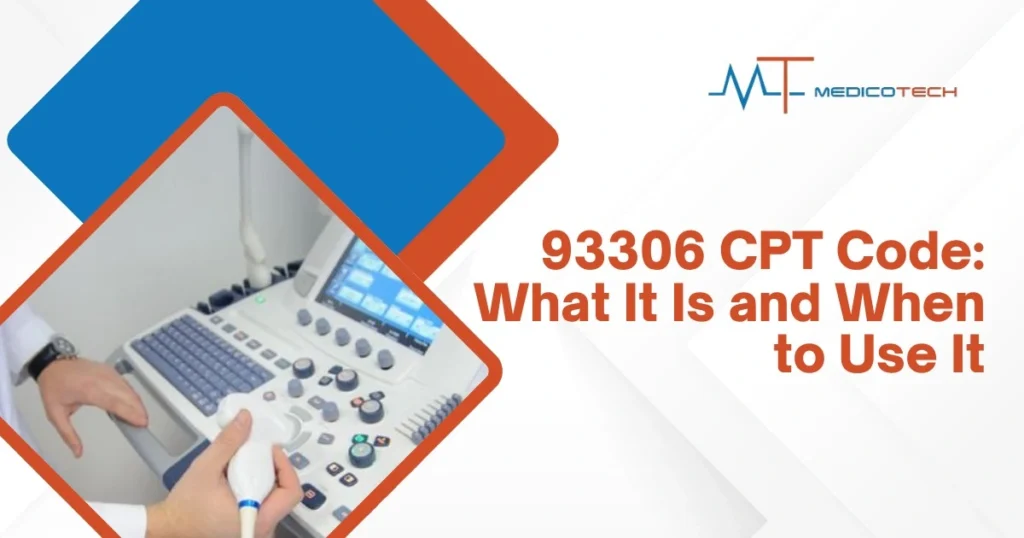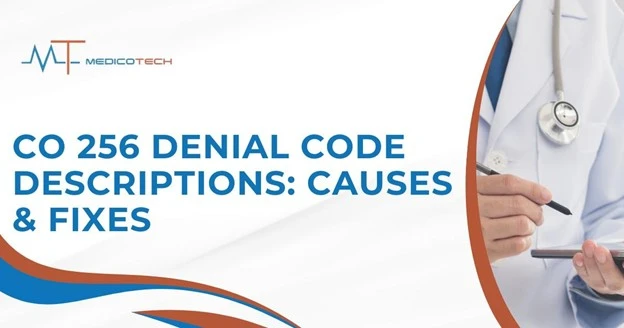CPT Code 93306 is used for complete transthoracic echocardiography (TTE) with Doppler and color flow imaging. This diagnostic procedure is essential for evaluating the heart’s structure, function, and blood flow. It’s commonly utilized by healthcare providers when a thorough assessment of the heart is needed, particularly for conditions such as heart murmurs, suspected valve disorders, or congenital heart defects.
The transthoracic echocardiogram is a non-invasive test that uses ultrasound waves to produce images of the heart’s chambers, valves, and blood flow. The procedure includes advanced techniques such as real-time 2D imaging, M-mode recording, spectral Doppler, and color flow Doppler. These techniques help physicians make informed decisions regarding the treatment and management of heart conditions.
Key Components of CPT Code 93306
1. 2D Real-Time Imaging
- The 2D real-time imaging component allows for a detailed view of the heart’s anatomy. It captures the size, shape, and motion of the heart’s chambers and valves, providing a visual representation of the overall heart function. This imaging is crucial in detecting abnormalities like valve leakage or chamber enlargement. This technique is similar to Dermatology Medical Billing Services, where advanced imaging is utilized to monitor skin conditions in-depth..
2. M-mode Recording
- M-mode recording offers a one-dimensional view of the heart’s structures over time. This technique helps in assessing the movement of heart walls, valves, and other structures. It’s often used to measure the thickness of the heart walls and the motion of the heart’s chambers, which is essential for evaluating heart health.
3. Spectral Doppler
- The spectral Doppler technique measures the velocity and direction of blood flow through the heart. By assessing how fast the blood flows and its direction through the heart’s chambers and valves, doctors can identify problems such as stenosis (narrowing of valves) or regurgitation (leaking valves).
4. Color Flow Doppler
- Color flow Doppler provides a color-coded visualization of blood flow. The colors indicate the speed and direction of the blood flow in real-time, allowing physicians to observe irregularities in the flow patterns. This technique is particularly useful in detecting conditions like valve prolapse, heart murmurs, or congenital heart defects.
When is CPT Code 93306 Used?
CPT Code 93306 is used in a variety of clinical situations that require a thorough evaluation of the heart. These include, but are not limited to:
Heart Murmurs
- Heart murmurs are abnormal sounds caused by turbulent blood flow within the heart. CPT 93306 is used to investigate the cause of the murmur, assess the severity, and guide treatment.
Chest Pain
- Patients presenting with unexplained chest pain can benefit from a complete TTE. This procedure helps identify potential causes, such as coronary artery disease, heart failure, or valvular heart disease.
Valve Disorders
- For patients with suspected valvular heart disease, such as aortic stenosis, mitral regurgitation, or tricuspid regurgitation, CPT Code 93306 provides crucial information on valve function and any potential defects.
Pre-operative Cardiac Assessment
- Before undergoing major surgeries, particularly for patients with a history of heart disease, a complete TTE can help assess the heart’s overall function and detect any underlying issues that could affect surgery outcomes.
Monitoring Chronic Conditions
- Chronic conditions such as heart failure, cardiomyopathies, and arrhythmias can be monitored using CPT Code 93306. Regular evaluations are essential to assess disease progression and the effectiveness of treatments.
Congenital Heart Defects
- This code is particularly useful for diagnosing congenital heart defects in children or young adults. These can include conditions such as hole-in-the-heart (atrial septal defect), valve malfunctions, or aortic abnormalities.
Differences Between CPT Code 93306 and Related Codes
While CPT Code 93306 is used for a comprehensive evaluation, there are other related CPT codes for less extensive procedures.
CPT Code 93307 vs. CPT 93306
- CPT 93306 includes Doppler and color flow Doppler imaging, which provide more detailed information about blood flow and valve function.
- CPT 93307 does not include Doppler studies. It is used for a more basic echocardiogram without the assessment of blood flow, which makes it less informative than 93306.
CPT Code 93308
- CPT 93308 is used for limited studies, usually for follow-up purposes or evaluating specific conditions like pericardial effusion (fluid around the heart). It does not offer the same level of detail or breadth as CPT 93306.
Stress Echocardiograms
- For assessing heart function under stress (e.g., during physical exertion), CPT Code 93350 or 93351 is used instead. These codes are specific to stress echocardiograms, which are used to evaluate the heart’s performance during exercise or medication-induced stress.
Modifiers for CPT Code 93306
Modifiers are used in conjunction with CPT Code 93306 for accurate billing and to distinguish between various services provided.
1. Modifier 26
- Used when only the interpretation of the test is performed, without the technical component (e.g., when the test is done by another healthcare provider).
2. Modifier TC
- Used to indicate that the technical component of the test (such as the use of equipment and test performance) is being billed separately.
3. Other Modifiers
- Modifier 59: Used when a distinct service is performed.
- Modifiers 76/77: Used when procedures are repeated.
- Modifiers 52/53: Used for reduced or discontinued services.
Documentation and Billing Guidelines for CPT Code 93306
Required Documentation
- Detailed Findings: Document the heart’s chambers, valves, and hemodynamics. This includes identifying structural abnormalities such as enlargement, thickening, or malformations.
- Medical Necessity: Provide a justification for the procedure, including symptoms, prior test results, and clinical history that support the need for a comprehensive echocardiogram.
Reimbursement
- Medicare reimburses for CPT Code 93306, with the average reimbursement rate being around $235 globally in 2025.
- Payers may have specific rules regarding the frequency of testing, and authorization requirements may apply.
Common Billing Mistakes to Avoid
Correct billing is essential for appropriate reimbursement. Some common billing mistakes to avoid include:
- Upcoding Limited Studies: Ensure that limited studies are not coded as CPT 93306.
- Missing Doppler Documentation: Doppler imaging is integral to CPT 93306. Make sure it is properly documented.
- Incorrect Modifier Use: Ensure the correct use of modifiers, such as 26 and TC, to avoid billing errors and claim denials.
Conclusion
CPT Code 93306 is an essential tool for evaluating the heart’s structure, function, and blood flow. It provides a comprehensive transthoracic echocardiogram using advanced imaging techniques, such as Doppler and color flow imaging, to diagnose and monitor various cardiac conditions. From heart murmurs and chest pain to congenital defects and pre-operative evaluations, this code plays a crucial role in assessing and managing heart health. By understanding how to use CPT 93306 correctly, both clinicians and billing professionals can ensure accurate testing, documentation, and reimbursement.
Frequently Asked Questions (FAQs) About CPT Code 93306
Does CPT 93306 Include Interpretation?
Yes, CPT Code 93306 includes both the performance of the echocardiogram and its interpretation unless billed with the TC modifier (which would only cover the technical part of the procedure).
Can CPT 93306 Be Billed Repeatedly?
Yes, CPT 93306 can be billed multiple times, but only if there is medical justification for repeat testing. Routine, non-medically necessary exams may be denied.
Is CPT Code 93306 Used for Pediatric Patients?
Yes, CPT 93306 is frequently used for diagnosing congenital heart defects in children, including issues such as atrial septal defects or patent ductus arteriosus.




